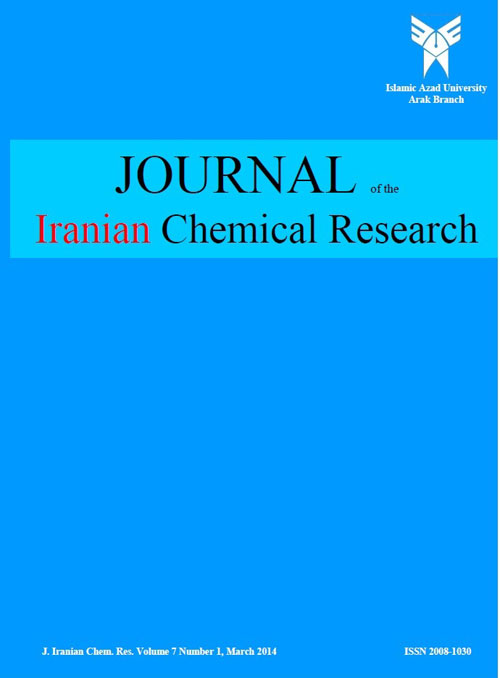Cu(II) and Zn(II) complexes with unsymmetrical tetradentate Schiff base ligands: Synthesis, spectral characterization, antimicrobial assay and DNA binding property
Author(s):
Article Type:
Research/Original Article (بدون رتبه معتبر)
Abstract:
The reaction of copper(II) chloride and zinc(II) chloride with N-(2-methylphenyl)-3-(1'-salicylaldehydene-2'- imine-ethane)-butanamide(H2L2a) or (MPSB), N-(2-methylphenyl)-3-(1'-(3'-methoxysalicylaldehydene-2'- imine-ethane)-butanamide (H2L2b) or (MPMSB) and N-(2-methylphenyl)-3-(1'-(2'-hydroxyacetylene-2'- imine-ethane)-butanamide (H2L2c) (MPHB) leads to the formation of a series of new complexes and they have been characterized by the spectral and analytical techniques. For the complexes [CuL2a-c] and [ZnL2ac], the central metal ion is coordinated to two azomethine nitrogen atoms and one phenolic oxygen atom of the aromatic aldehydes as well as 2-hydroxyacetophenone and enolic oxygen atom of the 2'- methylacetoacetanilide. DNA binding studies reveal the stronger binding capability of the present copper(II) complexes, confirmed by the absorbance, cyclic voltammetry, differential pulse voltammogram and viscometric studies. Similarly, remaining complexes do the same in the ligand field with less binding constants. In addition, fungistatic and bacteriostatic activities of both ligands and complexes have been evaluated. copper(II) complexes have shown the most significant activities.
Keywords:
Language:
English
Published:
Journal of the Iranian Chemical Research, Volume:5 Issue: 4, Autumn 2012
Pages:
197 to 212
https://magiran.com/p1863420


